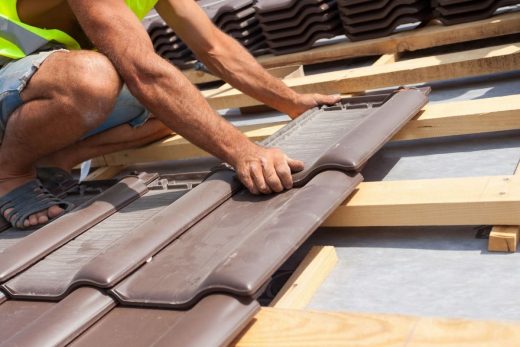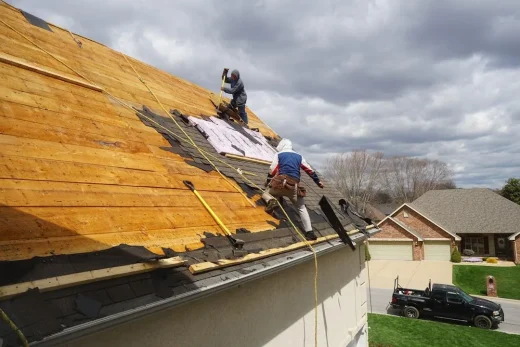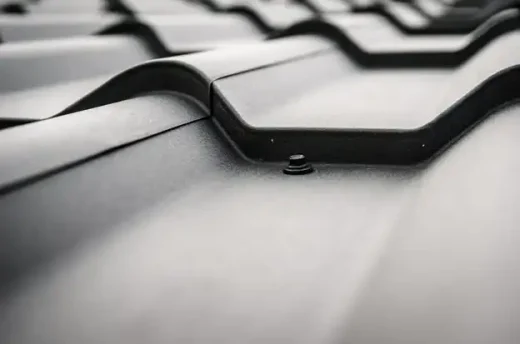6 useful roofing tips to prevent expensive repairs after installation, Property roof work durability
6 Useful Roofing Tips to Prevent Expensive Repairs
20 September 2024
Maintaining a functional and resilient roof is crucial for the longevity of your home. Roof repairs can be daunting and costly, but with the right preventive measures, you can avoid these hefty expenses. In this blog post, we will explore six indispensable roofing tips that will help you maintain your roof in top condition. These practical insights are designed to assist homeowners in preventing expensive repairs, enhance the durability of their roofs, and ensure a safe and comfortable living environment.
Regularly Schedule Professional Inspections
One of the most effective ways to prevent costly roof repairs is by scheduling regular professional inspections. Roofing experts have the skills and knowledge to identify potential issues before they escalate into significant problems. During these inspections, expert roofers can detect early signs of wear and tear, leaks, and structural damage that may not be visible to the untrained eye. By catching these issues early, you can address them promptly, saving you time, money, and the hassle of extensive repairs. Aim to have your roof inspected at least twice a year, preferably in the spring and fall.
Regular inspections not only help in spotting existing problems but also provide an opportunity to assess the overall condition of your roof. By keeping a close eye on your roof’s health, you can plan and budget for necessary maintenance and repairs, preventing unexpected expenses. Additionally, professional inspectors can offer valuable advice on how to maintain your roof between inspections, ensuring it remains in optimal condition throughout the year.
Clean Your Gutters
Keeping your gutters clean is another essential step in maintaining a healthy roof. Gutters play a crucial role in directing water away from your home’s foundation and roof. When gutters become clogged with leaves, debris, and dirt, they can no longer effectively channel water away. This can lead to water pooling on your roof, causing leaks, water damage, and even structural issues. Regularly cleaning your gutters, especially during the fall when leaves are more likely to accumulate, prevents these problems and ensures proper water flow.
Neglected gutters can also create a breeding ground for pests, such as mosquitoes and rodents, which can cause further damage to your roof. By keeping your gutters clean, you not only protect your roof but also maintain the overall hygiene and safety of your home. Consider installing gutter guards to reduce the frequency of cleaning and minimize the risk of clogs. Gutter guards act as a barrier, preventing debris from entering the gutters while allowing water to flow freely.
Trim Overhanging Branches
Overhanging tree branches can pose a significant threat to your roof, especially during storms and high winds. Branches that hang too close to your roof can scrape and damage the shingles, leading to leaks and other issues. Additionally, falling branches can cause severe damage to the roof’s structure, resulting in expensive repairs. To prevent these problems, it’s essential to regularly trim any branches that are close to or touching your roof.
Trimming overhanging branches not only protects your roof from physical damage but also reduces the risk of debris accumulation. Leaves, twigs, and other debris can collect on your roof and gutters, leading to clogs and water damage. By keeping branches trimmed, you minimize the amount of debris that falls onto your roof, making maintenance easier and more efficient. It’s recommended to keep branches at least 10 feet away from your roof to ensure adequate clearance and protection.
Address Leaks Promptly
Leaks are one of the most common and potentially damaging roofing issues. Even a small leak can lead to significant water damage, mold growth, and structural problems if left unaddressed. It’s crucial to address any leaks promptly to prevent these issues from escalating and becoming more costly to repair. Regularly inspect your attic and ceilings for signs of water stains, dampness, or mold, which are indicative of a leak.
When you notice a leak, it’s essential to act quickly. Identify the source of the leak and take immediate steps to mitigate the damage. Place a bucket or container under the leak to catch dripping water and prevent it from spreading further. If the leak is severe, consider using a tarp or plastic sheeting to cover the affected area temporarily until professional help arrives. Contact a roofing expert as soon as possible to assess and repair the leak, ensuring that the problem is resolved correctly and thoroughly.
Install Proper Ventilation
Proper ventilation is a critical component of a healthy and long-lasting roof. Without adequate ventilation, heat and moisture can build up in your attic, leading to a range of problems, including mold growth, wood rot, and increased energy costs. Ensuring that your roof has proper ventilation helps regulate temperature and moisture levels, protecting both your roof and your home’s interior.
There are several types of roof ventilation systems, including ridge vents, soffit vents, and gable vents. Each type serves a specific purpose and works together to create a balanced ventilation system. Ridge vents, for example, are installed along the peak of the roof and allow hot air to escape, while soffit vents, located under the eaves, allow cool air to enter. Gable vents, located on the sides of the attic, provide additional airflow and help expel hot air.
Remove Snow and Ice
Snow and ice accumulation on your roof can cause significant damage if not addressed promptly. The weight of heavy snow can strain the roof’s structure, leading to leaks, cracks, and even collapses in extreme cases. Ice dams, which form when melting snow refreezes at the roof’s edge, can block proper drainage and cause water to back up under the shingles, leading to leaks and water damage. Removing snow and ice from your roof is essential to prevent these issues and protect your home.
One of the safest ways to remove snow from your roof is by using a roof rake, a tool specifically designed for this purpose. A roof rake allows you to remove snow from the ground, reducing the risk of injury from climbing onto the roof. It’s essential to start from the edge and work your way up, removing small amounts of snow at a time to avoid damaging the shingles. Be cautious not to use sharp tools or excessive force, as this can cause further damage to the roof.
Maintaining a healthy roof is essential for protecting your home and avoiding costly repairs. By following these six useful roofing tips, you can ensure the longevity and durability of your roof, providing a safe and comfortable living environment for your family. Regular professional inspections, cleaning gutters, trimming overhanging branches, addressing leaks promptly, installing proper ventilation, and removing snow and ice are all proactive steps you can take to safeguard your investment.
Comments on this guide to 6 useful roofing tips to prevent expensive repairs article are welcome.
Roofing Contractor
Roofing Replacement Posts
6 questions to ask when hiring residential roofing contractor

First Time Replacing Your Roof

Types of Roofing Materials: Explained
Building Articles
Residential Architecture
Comments / photos for the 6 useful roofing tips to prevent expensive repairs – home roof repair firm page welcome.





